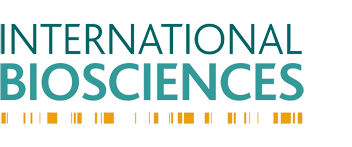Adoptees Discover Link Through Sibling DNA Test

In recent years, a sibling DNA test has been used to establish biological links between adopted children living with different families many miles apart, with a view to reuniting them. A company in Princeton, N.J., is thought to be the first to conduct a sibling test solely for this purpose. However, adoption specialists and bioethicists are worried that this might result in laboratories exploiting parents who wish to fill in the gaps in their adopted children’s life history. Likewise, it could be an unexpected and perhaps, unwanted, discovery to learn of a hitherto unknown sibling. As bioethicists caution, a sibling DNA test with samples from just the children often remain inconclusive without DNA samples from the alleged parents.
A sibling DNA test is a simple and pain-free procedure where two buccal swabs (one for each cheek) are rubbed against the inside of each individual’s cheek to collect loose cells that are then used in this genetic test.
Adoptees Discover Link Through Sibling DNA Test
In November 2004 a case was reported involving a sibling DNA test with an interesting conclusion. Some ten years ago two American women, one, Denise Shields, a 49 year old widow with a desire to raise a family, and the other, Nancy Hinkeldey, a 48 year old single mother, joined a group of ten families in all, to visit an orphanage in Nanning, a Southern province of Guangxi. Both women flew home on 7th November 1994, each with a baby girl.
Shields kept in touch with the family group, including Hinkeldey. Of the photos Shields sent, Hinkeldey noticed similarities between Shield’s daughter and her own, with resemblances in their respective jaw and cheek lines, in facial features as well as their hair lines. At the group’s 10 year reunion last July on a beach in Florida, Shields and Hinkeldey acknowledged the similarities concerning their adopted daughters, including the two girls’ academic, music and artistic abilities.
Then came the moment when wondering was eclipsed by certainty, when Shields noticed a strange indentation on the back of Hickeldey’s daughter’s right thigh – the very same mark that Shields’ daughter had.
With their daughters’ consent, Shields and Hinkeldey presented them for a Sibling DNA test, which confirmed that the girls shared at least one biological parent, thus making the two girls biological half-sisters. However, the question remained whether they might have the same two biological parents, a fact that a DNA testing laboratory could not rule out.
Whilst Shields’ daughter often pined for a sister, Hinkeldey’s daughter always felt incomplete, as if part of her was missing. Following the summer group’s reunion, Hinkeldey conducted Internet research for any information regarding DNA testing and blood connections between adoptees. She soon found an e-mail group of the name Sister Far, with the majority of the members being siblings from China. Through this group, the two mothers were encouraged to take further DNA tests and proceeded to rub their daughters’
cheeks with the customary swabs and sent them off to be tested. The test results confirmed that the adopted girls were sisters.
Further reading About Adoption and DNA Testing
Many grown-up children go in search of their roots when they realise they don’t resemble their adopted parents or their adopted parents tell them the story of how they came to be adopted. But some cases are more compelling – especially those that feature adopted children from different cultures altogether. Read our story about Australian Aboriginal Children taken away from their parents by the Australian government.


